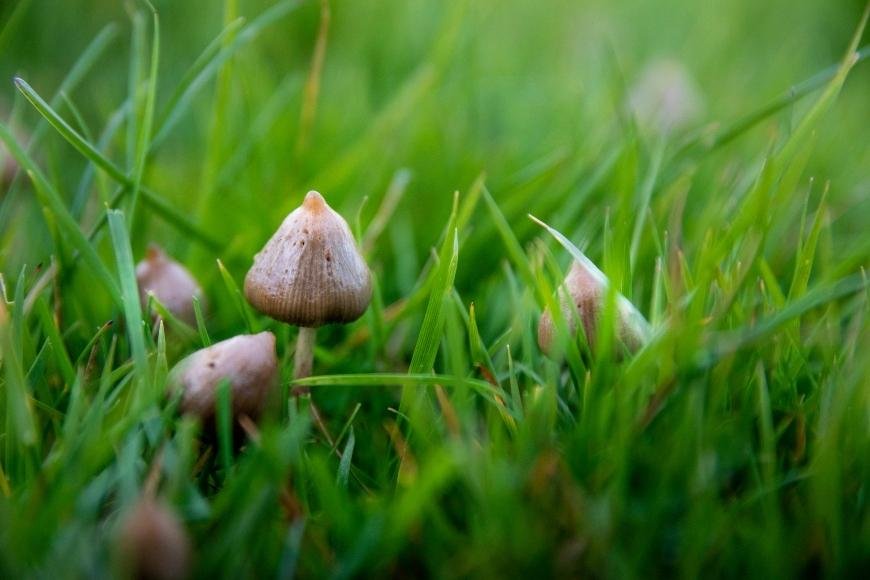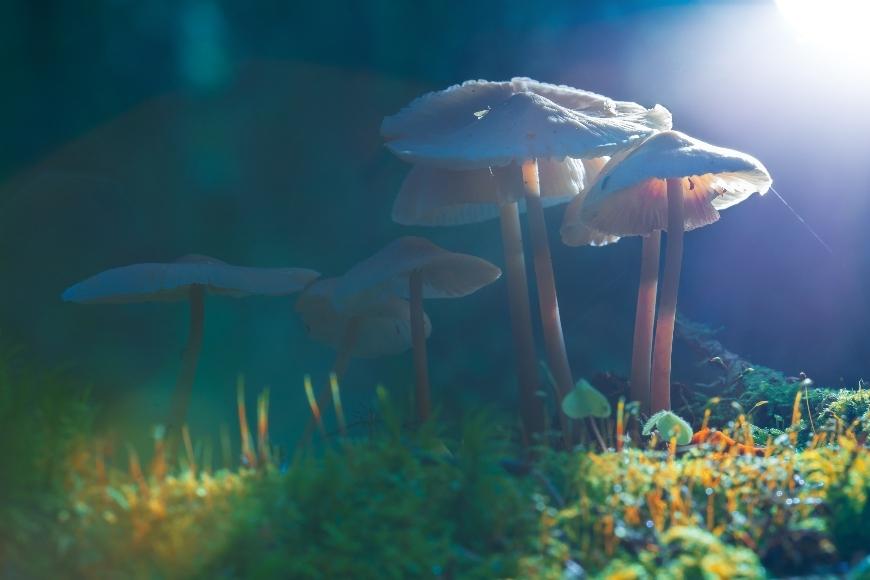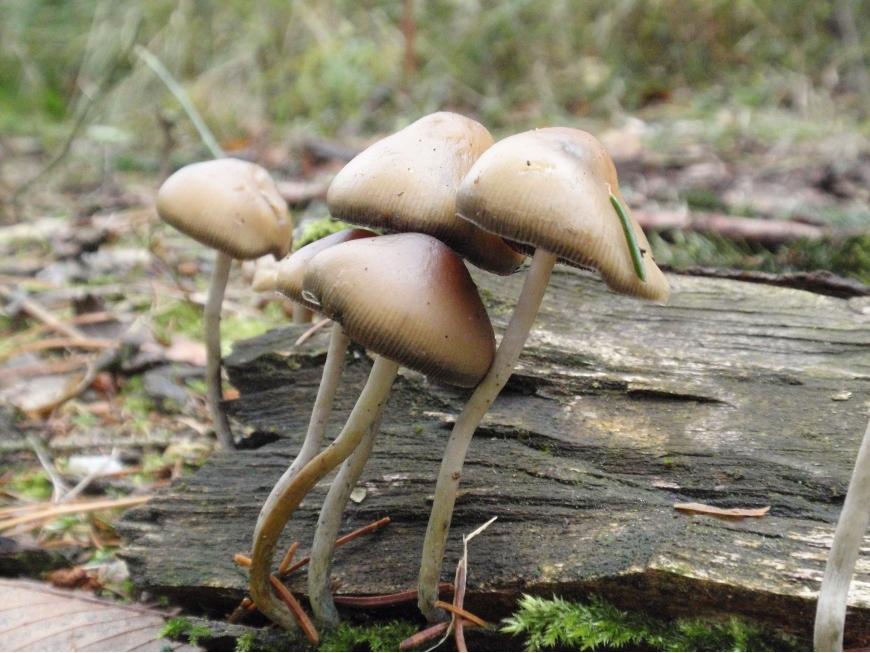How to Find Magic Mushrooms in the Wild
Learn how to find magic mushrooms in the wild with expert tips on habitat identification, environmental factors, and accurate hunting techniques.

Discovering how to find magic mushrooms in the wild can be a thrilling and rewarding experience for those interested in exploring the world of psychedelic fungi. In this comprehensive guide, we'll delve into various aspects of locating and safely harvesting these potent little treasures.
As you embark on your quest to find magic mushrooms, it's essential to consider local laws, suitable habitats, environmental factors, and proper identification techniques. We'll also discuss sustainable foraging practices that protect both you and the environment.
Discover the thrill of uncovering magic mushrooms in their natural habitat with helpful advice and useful tips. So let's dive in!
Table of Contents:
- Know the Laws and Respect Private Property
- Find the Perfect Habitat for Magic Mushrooms
- Consider Environmental Factors
- Choose the Right Time of Year
- Utilize Resources
- Accurately Identify Mushrooms
- Practice Sustainable Foraging
- FAQs in Relation to How to Find Magic Mushrooms in the Wild
- Conclusion
Know the Laws and Respect Private Property
Before going on a hunt for magic mushrooms, ensure that you are aware of local laws and regulations regarding their use. Possession and cultivation of psilocybin mushrooms are illegal in many countries, including the United States. However, some regions have decriminalized their use for personal or therapeutic purposes. It's important to research the laws specific to your area to avoid any legal issues.
Remember to respect private property rights when searching for psychedelic mushrooms. Always ask for permission from landowners before entering their property for mushroom hunting.

Stay Up-to-Date on Decriminalization and Legalization Efforts
A push is underway to decriminalize and legalize certain psychoactive compounds, such as magic mushrooms. Some cities, such as Denver, Oakland, Santa Cruz, and Ann Arbor, have decriminalized psilocybin-containing fungi at a municipal level. Additionally, Oregon became the first state in North America to legalize psilocybin-assisted therapy through Measure 109 in November 2023. It's important to stay informed about these evolving policies to know how they may affect your ability to find mushrooms legally.
Join a Mycological Society for Valuable Resources
Joining a local mycological society is an excellent way to gain the knowledge and resources necessary to legally find psychedelic mushrooms. These organizations are dedicated to the study and appreciation of fungi, including both edible and psychoactive mushrooms. By participating in their events, you can gain valuable knowledge about mushroom identification, habitat preferences, and ethical foraging practices. Many societies also offer workshops on topics like cultivation techniques or mushroom hunting tips.
Joining a collective of like-minded individuals focused on fungi can be advantageous in expanding your understanding and cultivating an awareness of the rules governing these organisms.
Find the Perfect Habitat for Magic Mushrooms
For the most successful search, it's important to know where to look for wild magic mushrooms; their habitats vary according to species. The habitats of psychedelic mushrooms vary depending on the species, so understanding their preferred environments will increase your chances of success.
Psilocybin Mushroom Species and Their Habitats
Psilocybe cubensis, one of the most popular psychoactive mushrooms, is often found in subtropical regions like Central and South America, Southeast Asia, and parts of North America. These magic mushrooms grow primarily on dung or manure-rich soil in grasslands and pastures.
On the other hand, Psilocybe semilanceata (liberty caps) thrive in temperate climates like Europe and North America. They prefer grassy areas such as meadows or lawns near wooded edges. Another species worth noting is Psilocybe cyanescens, which prefers wood chips or mulch-covered landscaped areas with plenty of moisture.
Where to Look for Magic Mushrooms
- Forests: Many psilocybin mushroom species favor shaded areas beneath trees or alongside logs within forests. Species like Psilocybe ovoideocystidiata are typically found around decaying wood debris along riverbanks.
- Grasslands: Open fields with rich organic matter provide a suitable habitat for some magic mushroom varieties like Psilocybe caerulipes that often grow near tall grasses during late spring through early fall.
- Urban environments: Surprisingly, some psychoactive mushrooms can be found in urban settings. Psilocybe cyanescens are known to grow on wood chips and mulch used in landscaped areas or parks.
Factors to Consider
Local environment plays a significant role in determining where magic mushrooms will grow. For example, the presence of certain tree species may indicate a higher likelihood of finding specific psilocybin mushrooms nearby. Additionally, experienced foragers often consider factors like moisture levels and temperature when planning their mushroom hunting expeditions.
Resources to Help You Find Magic Mushrooms
Utilize resources such as identification guides, online forums, and local mycology groups to learn more about suitable habitats for various psychedelic mushroom species within your region. With a bit of exploration and fortune, you'll soon be able to locate psychedelic mushrooms.
Consider Environmental Factors
When looking for magic mushrooms in the wild, it is essential to comprehend the particular circumstances and environmental elements that support their growth. Let's explore some key elements to consider:
Moisture
Psilocybin mushrooms love damp environments with high humidity levels. Look for areas where water accumulates or near sources like rivers, lakes, or ponds. You may also find them on wood chips, mulch piles, or landscaped areas that retain moisture.
Temperature
The ideal temperature range for psychoactive mushrooms is 40°F to 90°F (4°C to 32°C), but some species can tolerate cooler or warmer climates. Some species prefer warmer climates, while others can tolerate cooler temperatures.
Tree Species
Many psilocybe genus mushrooms have a symbiotic relationship with specific trees. Alder and willow trees are often the host to Psilocybe cyanescens, or "wavy caps," while other species tend to thrive around hardwoods such as oak and beech.
It's essential to research the local environment and understand which species of magic mushrooms are native to your area. North America is home to several psychoactive mushroom species, including Psilocybe cubensis, Psilocybe caerulipes, and Psilocybe semilanceata.
Keep in mind that some habitats may be more accessible than others. Shaded areas under trees or bushes can provide ideal growing conditions for many psilocybin mushrooms but might also harbor poisonous look-alikes. Always exercise caution when collecting wild mushrooms and consult an experienced forager or identification guide if you're unsure about a particular specimen.
By considering these environmental factors while hunting for psychedelic mushrooms, you'll increase your chances of finding them safely and sustainably.
Choose the Right Time of Year
For successful mushroom hunting, timing is key. Different species have distinct growing seasons, so knowing when to search for them is crucial.
Psilocybe cubensis, one of the most popular and widely distributed psychedelic mushrooms, typically grows from late spring through early fall in North America. This species prefers warmer temperatures and can often be found thriving on dung or decaying grasses.
Psilocybe cyanescens and Psilocybe semilanceata, commonly known as wavy caps and liberty caps respectively, prefer cooler climates. They usually fruit during autumn months in regions with higher rainfall such as Europe or Pacific Northwest areas of North America.
Seasonal Hunting Tips
- Spring: Look for Psilocybe ovoideocystidiata around wood chips and landscaped areas in eastern United States.
- Summer: Search for Psilocybe caerulipes near shaded woodland edges throughout much of North America.
- Fall: Hunt for Psilocybe cyanescens along mulched paths or garden beds across Europe and western United States; find Psilocybe semilanceata among grasslands throughout northern Europe.
Keep in mind that local weather patterns can significantly impact mushroom growth. A particularly wet season may result in an earlier or more abundant fruiting, while a dry spell could delay their appearance. It's essential to keep track of local weather conditions and adjust your foraging plans accordingly.
Joining local mycology clubs or online forums can also help you stay informed about the best times to find magic mushrooms in your area. Experienced foragers often share tips and updates on when specific species are fruiting, making it easier for newcomers to get started with mushroom hunting.
Utilize Resources
Finding psychedelic fungi can be a challenge, particularly for novices. Don't fret; there are numerous resources to aid you in mastering the art of recognizing hallucinogenic fungi. Here are some tips to get you started:
Invest in a Mushroom Identification Guide
A good mushroom identification guide is a must-have for any serious mushroom hunter. Books like "Mushrooms Demystified" by David Arora or "Psilocybin Mushrooms of the World" by Paul Stamets provide detailed information on various species of psilocybin mushrooms, including descriptions, habitat preferences, and photographs. You can also find online versions of these guides if you prefer digital resources.
Check Out Online Forums
Online forums are a great resource for mushroom hunters. They offer extensive databases with pictures and descriptions of different psilocybe species commonly found across North America. Additionally, they have active discussion forums where experienced foragers share tips and advice with newcomers. Just be sure to cross-reference information from multiple sources before making any decisions about mushroom identification.
Join Local Mycology Groups
Joining local mycology groups or clubs can be an invaluable resource when learning how to find magic mushrooms in the wild. These organizations host events such as guided walks or workshops on mushroom hunting techniques and provide opportunities for networking with other enthusiasts who may have valuable insights into finding psychoactive fungi in your area.
Connect on Social Media
Social media platforms like Facebook or Reddit often have specialized groups focused on sharing knowledge about psychedelics. These communities can be a great place to ask questions, share experiences, and learn from other members who have successfully found magic mushrooms in the wild.
Remember, finding and identifying magic mushrooms takes time and practice. By utilizing these resources and connecting with experienced foragers, you'll increase your chances of finding psychedelic mushrooms while minimizing the risk of accidental ingestion or mushroom poisoning.

Accurately Identify Mushrooms
Looking for magic mushrooms in the wild can be an exciting and rewarding experience, but it's crucial to identify them accurately before consuming. Misidentifying fungi can result in unintentional consumption of poisonous species, which may lead to extreme sickness or even fatality. To avoid mushroom poisoning, follow these tips:
Study Identification Guides
Invest time in learning about psilocybin mushrooms by studying reliable identification guides like Shroomery, books on mycology, and online resources dedicated to psychedelic fungi.
Become Familiar with Common Species
Become familiar with common species such as Psilocybe cubensis, ovoideocystidiata, cyanescens, semilanceata (liberty caps), and caerulipes by studying their specific characteristics. Learn their specific characteristics such as cap shape, color changes when bruised (blueing), spore print coloration, etc.
Note Habitat Preferences
Different psilocybin mushrooms grow in various habitats like wood chips (Psilocybe cyanescens), grasslands (Psilocybe semilanceata), or landscaped areas near rivers (Psilocybe ovoideocystidiata). Knowing where each species is likely to grow will help narrow down your search.
Avoid Lookalikes
Be cautious of non-psychoactive or poisonous lookalike species that resemble magic mushrooms; for example, Galerina marginata resembles some members of the Psilocybe genus but is highly toxic.
Consult Experienced Foragers
If you're unsure about a mushroom's identity, seek advice from knowledgeable friends or local mycology groups. For a more experienced approach to mushroom identification, take advantage of online communities such as the r/shrooms subreddit.
When it comes to 'shrooms, better be safe than sorry - if uncertain of identity, discard. As you gain experience and confidence in identifying psilocybin mushrooms, you'll find yourself more equipped for successful and enjoyable mushroom hunting adventures.
Practice Sustainable Foraging
When searching for magic mushrooms, it's crucial to prioritize sustainable foraging practices. This ensures future generations can enjoy the same experience and helps maintain a healthy ecosystem. So, how do you practice responsible mushroom hunting?
Gather just a smidgen of the mushrooms in any given area to evade over-collection. Recall that there are various kinds of psilocybe, like cubensis, ovoideocystidiata, cyanescens and more existing across North America.
Avoid disturbing the natural environment while searching for psychedelic mushrooms like psilocybe semilanceata. Be mindful not to trample plants or disrupt animal habitats when exploring shaded areas with wood chips or landscaped areas where psychoactive mushrooms might be hiding.
Guidelines for Sustainable Foraging:
- Leave no trace: Always carry a bag or container to store your collected mushrooms and dispose of any trash properly.
- Tread lightly: Stick to established paths whenever possible; avoid creating new trails through sensitive ecosystems.
- Educate yourself: Use an identification guide or consult experienced foragers before consuming any wild mushroom - this is crucial since some varieties may cause severe mushroom poisoning if ingested.
- Respect private property: Always ask for permission before entering private lands to search for mushrooms, and respect any posted signs or restrictions.
In addition to these guidelines, consider joining a local mycology group or participating in organized mushroom hunts. These events often provide valuable knowledge about the local environment and can help you become more proficient at identifying psilocybin mushrooms like psilocybe caerulipes. By practicing sustainable foraging techniques, you'll be able to enjoy the magic of mushroom hunting while preserving the delicate balance of our natural world.
FAQs in Relation to How to Find Magic Mushrooms in the Wild
Where do magic mushrooms grow in the wild?
Magic mushrooms, like psilocybin species, thrive in damp and shaded areas with rich organic matter, such as wood chips, landscaped areas, pastures, and forests.
What is the best time of day for mushroom hunting?
The ideal time for mushroom hunting is during daylight hours, preferably in the morning or late afternoon when temperatures are cooler and humidity is higher, creating favorable conditions for mushroom growth.
What are some wild psychedelic mushrooms?
Wild psychedelic mushrooms, like Psilocybe semilanceata (liberty cap), Psilocybe ovoideocystidiata, and Psilocybe caerulipes, contain psychoactive compounds such as psilocybin that can induce altered perceptions and hallucinations.
Where do mushrooms come from?
Mushrooms originate from fungal mycelium, a network of thread-like structures found underground or within decaying organic material, which forms fruiting bodies when environmental conditions become suitable.
Conclusion
In summary, seeking out and harvesting wild magic mushrooms can be a thrilling experience for those who enjoy recreational drug use. However, it is important to understand local laws and regulations, identify suitable habitats, consider environmental factors, choose the right time of year, utilize resources available online or through experts in mycology field. Accurately identifying mushrooms and practicing sustainable foraging are also crucial steps to ensure safety while enjoying this activity.
By following these guidelines on how to find magic mushrooms in the wild responsibly you can have a safe and enjoyable experience with nature's bounty. Remember that mushroom hunting should always be done with caution and respect for both the environment and yourself.






































































































































